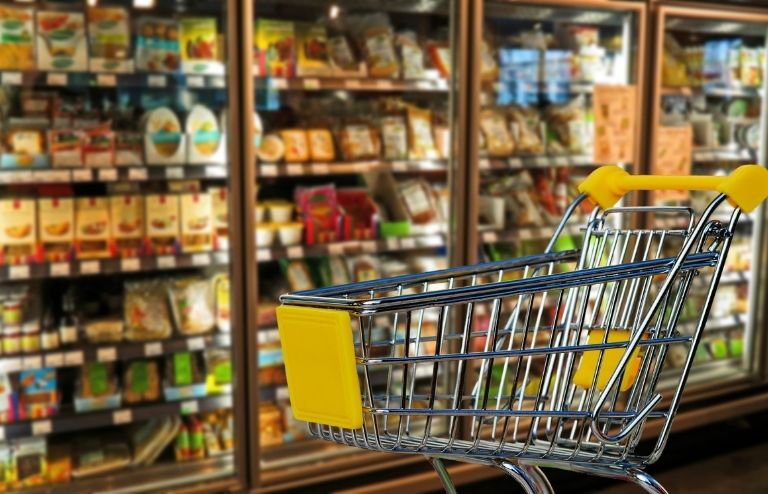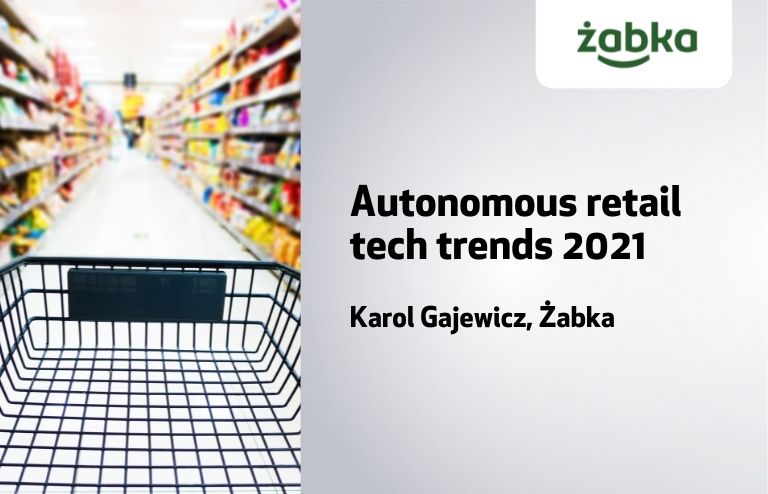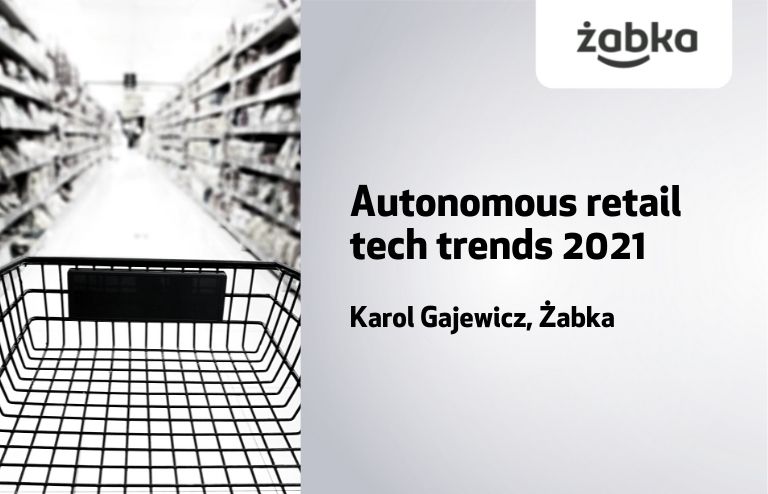Karol Gajewicz, Żabka
Imagine a store which you enter, take products off the shelves and leave without having to stand in a queue, interact with the seller, take out cash or a payment card. Due to current retail tech trends, such solutions are no longer the sphere of the imagination, but a real solution called Żappka Store – a fully autonomous grocery store.
Covid-19 – change accelerator
The covid-19 pandemic has reshaped almost every aspect of our lives, and above all, the way we work, travel and shop. Technological innovations thought to be introduced in a few years are implemented and scaled up within a few months. Wherever there is direct contact, and thus there is a risk of transmission of the virus, service providers have been forced to reorganize daily business operations. Retailers are now at a turning point in history and their ability to innovate quickly will not only have a huge impact on the industry landscape but also on their chances of surviving in the marketplace.
The retail industry began to develop e-commerce, offer home deliveries and contactless payment methods, and thus develop new technologies and rebuild the entire supply chain to be able to offer the same level of customer service in the new sales channel.
While the use of e-commerce channels in retail is increasing, there will always be a demand for brick-and-mortar stores. That is why Żabka decided to use the latest technology and provide customers with a shopping experience that meets the changing expectations in the new reality.
Autonomous retail stores market
According to Allied Market Research and PR Newswire reports, the retail store automation market is expected to reach over USD 23 billion worldwide in 2026, compared to approximately USD 11 billion in 2018 (with a cumulative annual growth rate of 9.6%). China itself, which is referred to as the precursor of automation and the introduction of autonomous stores, estimates its local market at USD 7.1 billion in 2020, assuming that by 2022 over 245 million users will become customers of a given type of store.

Fully autonomous grocery store – how it works?
At the beginning, join the Żappka Store in the Żappka application and connect card in Żappka Pay. The added card will be the default payment method in the Żappka Store. Approach the scanner located by the entrance door to the Żappka Store, scan the QR code generated in the application and start shopping! The door to the store unlocks automatically after scanning the QR code.
One can enter the store with accompanying people, and each person’s purchases will be added to her/his bill. Take items off the shelf and pack them straight into a bag or backpack. Don’t have to scan them anywhere or wait in the checkout line. After successful shopping, transaction confirmation will be found in the application and a PDF invoice on the e-mail. The corresponding amount will also be taken from the previously added card.
What are the consumer reactions? Better than we expected! Customers appreciate the fact that:
“No cashier nor cash register – I do not have to wait until he comes to the cash register”
„24/7 – round the clock, also open on Sundays”
„Modern, futuristic”
“It saves a lot of time. Shopping is done very quickly.”
“Clean, elegant and tidy”
„Quick shopping, on the way to/from work”
What technology trends in autonomous retail will come next?
Although the autonomous Żappka Store is distinguished by innovation, we are already considering what we can do more to give our customers an even better shopping experience. That is why we are looking at the main trends of autonomous retail technology.
Age detection
The ability to identify the age of the person making the purchase will allow to introduce to autonomous stores an offer available only for adults, such as alcoholic drinks or tobacco. Creating or using a digital ID card can be used to protect the store from theft by identifying the offender. The ability to identify the age will also allow the generation of useful data linking a given age group with the purchase of individual products. Thanks to this, it will be possible to offer a person entering the store a personalized promotion.
Contactless payments
According to the reports of Allied Market Research and Grandview Research, the value of the contactless payments market in 2019 and 2020 amounted to USD 1,168 billion and USD 1,340 billion, respectively. By 2027, this value is expected to reach USD 5,400 billion (with a cumulative annual growth rate of ~ 20%).
The market is working on improving solutions ensuring the security of contactless payments (currently, having a card and making purchases for an amount below the limit, there is no verification whether the cardholder is the owner). The most promising technology in this field is the so-called “Face recognition” checking the identity based on the face and scanning the eye. The customer can be recognized (after one-time registration) and, on this basis, also admitted to autonomous stores.
Voice assistant
The global market of Voice Assistant applications is currently worth around USD 450 million, while reports include VynZ Research, Market Research Future, and MarketWatch predict the growth of the entire Voice Assistant market to USD 7.3 billion in 2025, with a cumulative annual growth rate (CAGR) of approximately 24.32%.
The self-driving voice assistant can be used, among others, to provide information about store hours, inventory, prices, frequently asked questions and product availability. It can also prove useful in the context of comparisons and attributes of individual products. Voice assistant helps to find sought products in the store.
Multi-functional store
Despite the dynamic growth of the e-commerce trend and its worth of USD 9 trillion in 2019, its share in total sales of retail stores is approximately 11% . The above data indicate the key position of physical stores in the retail industry. This does not mean, however, that the given spaces should not undergo further modernization and optimization of customer experience.
A study by Deloitte in the UK showed, among other things, that around 19% of respondents are dissatisfied with the availability of free Wi-Fi internet in cities, and 26% with insufficient parking spaces1. This creates an opportunity to increase customer satisfaction and the frequency of shopping in stores by delivering missing values in cities. Autonomous stores can be integrated with solutions enriching city infrastructure – docking stations for micro-mobile means of transport, Wi-Fi points, delivery stations over even with bus stops and sharing with them energy coming from the self-sufficient shop.
We are supported by MIT EF CEE
For many customers of the autonomous Żappka Store, it is the quintessence of the store of the future – safe, seamless and convenient. However, our ambition is to take advantage of the latest trends so that the consumer experience is even better. This is why we take part in the MIT EF CEE acceleration program to find the best solutions with the help of experienced partners.






